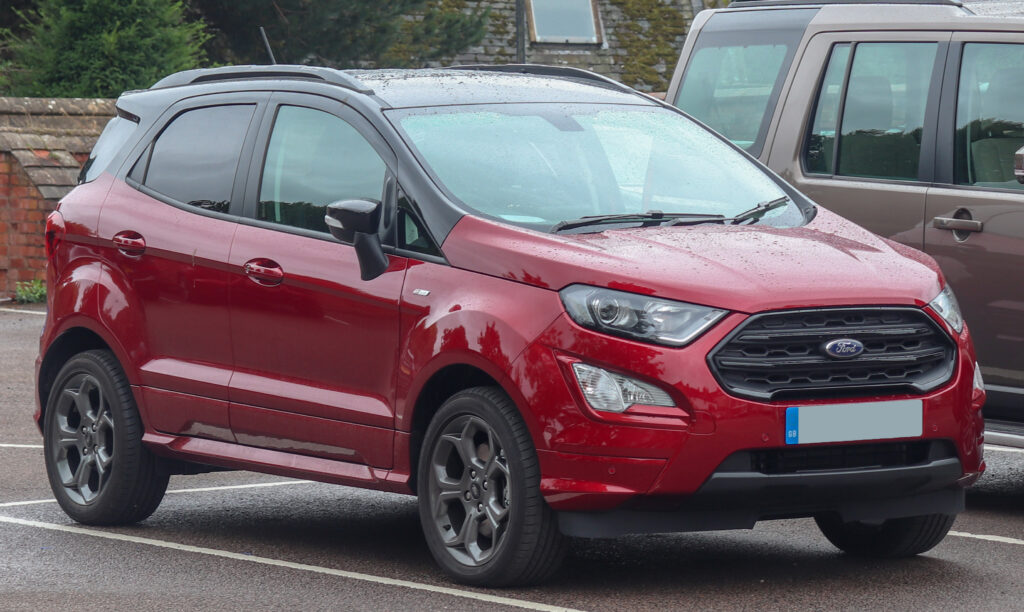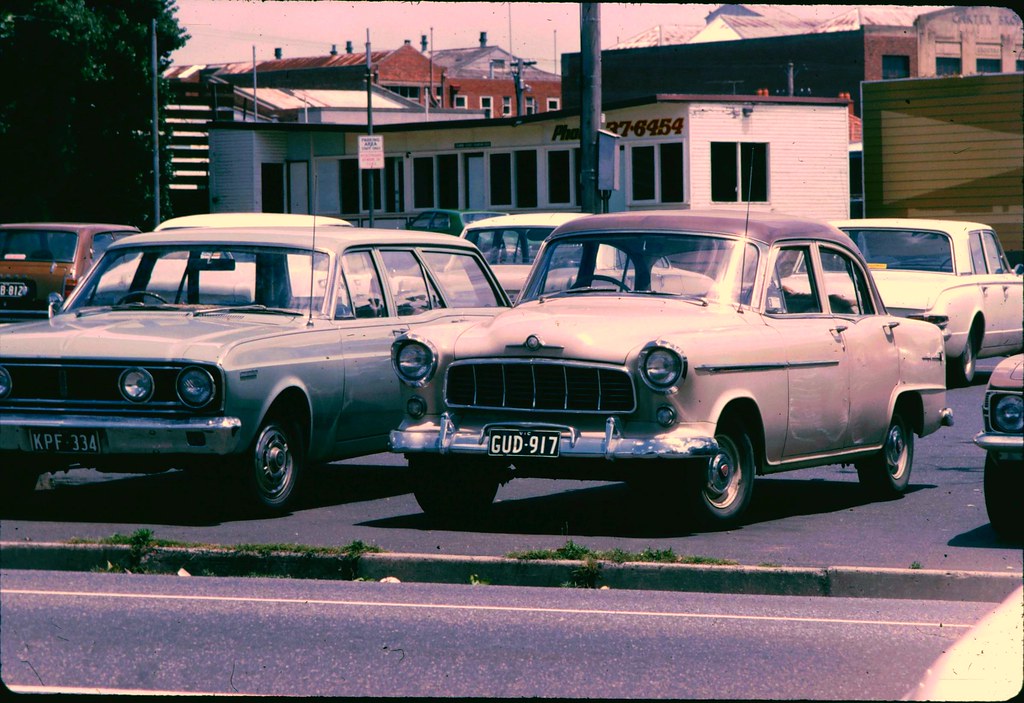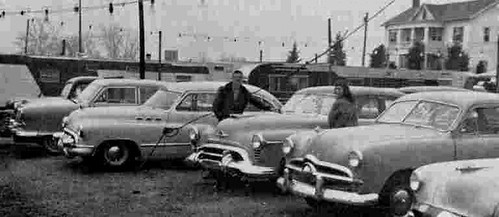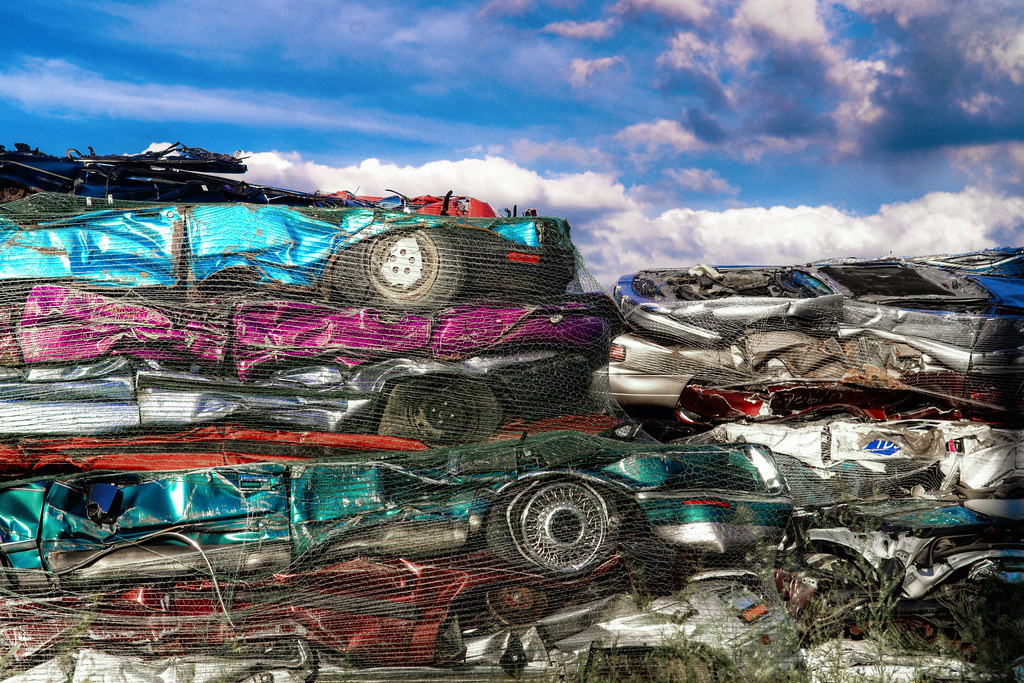
Buying a used car can feel like a smart financial move, offering excellent value compared to purchasing new. It’s a pathway to getting more for your money, often allowing you to step into a higher trim level or a more premium model that might otherwise be out of reach. However, this appealing prospect comes with a critical caveat: you must be absolutely sure of the vehicle’s full history before you commit.
One of the biggest red flags you can uncover during your research, and a truly critical piece of information, is the presence of a salvage title. This designation isn’t just a minor detail; it means the vehicle has been declared a total loss by an insurance company. This usually happens due to severe accident damage, flooding, fire, or even a recovery after theft. Ignoring this crucial detail can lead to a host of expensive and dangerous problems down the road.
The good news is that you don’t have to navigate this complex terrain alone. You can proactively uncover a salvage title, often for free, using a variety of online VIN lookup tools, state resources, and federal databases. This comprehensive guide will equip you with step-by-step instructions and essential knowledge, ensuring you’re empowered to make a truly informed decision and protect yourself from hidden pitfalls.

1. **Understand What a Salvage Title Means**Before you can effectively check for a salvage title, it’s crucial to grasp what this term truly signifies. A salvage title is an “official designation given to a vehicle that has sustained so much damage that the cost of repairing it exceeds a significant percentage of its pre-damage market value—usually between 60% and 90%, depending on the state.” This means an insurance company has deemed the car a total loss, indicating that repairing it is not economically viable.
Once a vehicle is declared a total loss, the insurance company promptly notifies the Department of Motor Vehicles (DMV). Following this notification, the car is officially issued a salvage-branded title. This branding is a permanent mark on the vehicle’s history, signaling its severely damaged past.
It’s important to understand that this designation isn’t temporary. Even if a vehicle is subsequently repaired and made drivable, the salvage title remains permanently affixed to its record. This history will follow the car through every future sale and registration, impacting its value and desirability.
Several common scenarios typically lead to a vehicle receiving a salvage title. These include “Severe Accidents” where cars are involved in high-impact collisions resulting in bent frames or damaged safety systems. “Flood Damage” is another frequent cause, affecting vehicles submerged in water and leading to electrical corrosion or engine issues. Fire damage, from engine fires to wildfires, can compromise structural and mechanical integrity, while “Theft Recovery” vehicles are often stripped or vandalized before being found.
Read more about: Beyond the Page: 14 Profound Aspects of Toni Morrison’s ‘Beloved’ That Still Resonate Today

2. **Learn the Major Risks of a Salvage Title**While the prospect of purchasing a salvage car might initially seem like a bargain, promising significant savings upfront, it’s vital to understand that the potential hidden risks can far outweigh any immediate financial advantage. These vehicles come with a host of problems that can quickly turn a perceived deal into a financial nightmare. Recognizing these risks is your first line of defense.
One of the most immediate and impactful risks is a “Reduced Resale Value.” Salvage vehicles consistently “typically sell for 30–50% less than clean-title equivalents.” This depreciation means that even if you buy it cheaply, you’ll likely sell it for significantly less, making it a poor long-term investment. Your potential savings on the purchase price are often erased, and then some, when you try to move it on.
Another critical concern revolves around “Hidden Structural Damage.” While repairs might superficially cover up the visible damage, they can often mask underlying issues like frame misalignment, poor welds, or the use of non-OEM (Original Equipment Manufacturer) replacement parts. These hidden structural compromises can seriously impact the vehicle’s safety, handling, and long-term durability, leading to unexpected and costly repairs in the future.
Furthermore, acquiring a salvage-titled vehicle can lead to significant “Insurance & Financing Issues.” Many insurance companies are reluctant to offer comprehensive coverage for these cars, and in many cases, they may outright refuse it. Similarly, most banks and credit unions are hesitant to approve loans for salvage vehicles, making financing difficult or impossible. This limitation can drastically affect your ability to get proper coverage or secure a loan.
Perhaps one of the most insidious risks is “Potential Title Fraud (Title Washing).” Dishonest sellers may attempt to “re-register salvage vehicles in another state to obtain a clean title and hide the car’s history.” This illegal practice makes it incredibly challenging for unsuspecting buyers to discover the vehicle’s true past. According to the National Highway Traffic Safety Administration (NHTSA), “flood-damaged vehicles are especially prone to title washing, making VIN checks critical.”
Read more about: Tom Hanks’ Flops and Hollywood’s Most Expensive Mistakes: A Deep Dive into Box Office Bombs

3. **Utilize Free Carfax Alternatives (e.g., VinCheckPro)**The digital age offers powerful tools to uncover a vehicle’s hidden past, and one of the most effective strategies is to utilize free online VIN lookup services. Tools like VinCheckPro, which offers a Free Carfax Report alternative, are invaluable resources in your quest to detect a salvage title before you make a commitment. These platforms compile extensive data to give you a comprehensive overview.
When you use a tool like VinCheckPro, you gain access to critical information that can reveal the car’s true condition. Specifically, it can disclose “Salvage, rebuilt, or total loss history,” providing an immediate alert if the vehicle has been deemed a total loss by an insurer. It also offers “Detailed title changes and accident reports,” allowing you to track the vehicle’s ownership and any significant incidents.
Beyond just the salvage status, these services can pinpoint “Flood, fire, or theft branding,” giving you specific details about the nature of the damage that led to its total loss designation. The significant advantage of tools like VinCheckPro is their ability to “use multiple national and state data sources to provide a more complete snapshot than many single-source lookups,” ensuring a broader and more accurate picture.
To perform this check, the process is straightforward. First, you’ll need to “Locate the VIN” (Vehicle Identification Number), which is typically found on the dashboard (driver’s side), inside the driver’s door frame, or on official documents. Next, you simply “Enter the VIN in a Trusted Tool” like VinCheckPro. Finally, you will “Review for Salvage or Rebuilt Branding,” actively looking for specific indicators such as “Salvage,” “Flood,” “Fire,” or “Total Loss.” A useful “Pro Tip” from the context highlights that a car history report from VinCheckPro “will combine title branding, accident history, and odometer readings into one report for faster review.”

4. **Leverage the National Motor Vehicle Title Information System (NMVTIS)**Beyond commercial alternatives, a crucial and authoritative resource for uncovering a vehicle’s past is the National Motor Vehicle Title Information System, or NMVTIS. This system stands as a cornerstone in vehicle history verification, offering a government-mandated and centralized database that is specifically designed to combat title fraud and provide transparency.
NMVTIS is a comprehensive “government-mandated database that compiles title data from state DMVs, salvage yards, and insurance carriers.” This means it collects information directly from official sources and key industry players, making it a highly reliable source for title information. Its broad reach helps to ensure that critical historical data is captured, regardless of where the vehicle has been registered or processed.
One of the primary and most significant benefits of using NMVTIS is its effectiveness in helping “detect title washing by revealing all brands ever applied to a VIN.” Title washing, a deceptive practice where a salvage title is moved across state lines to obtain a ‘clean’ title, is a serious concern for used car buyers. NMVTIS’s ability to track all past brands is a powerful deterrent against this type of fraud, providing a historical record that transcends individual state lines.
While NMVTIS itself doesn’t directly offer reports to the public, it operates through approved providers. The good news for budget-conscious buyers is that “Some NMVTIS-approved providers offer free or inexpensive reports.” This accessibility means you can tap into this vital government data without necessarily incurring significant costs, allowing you to confirm the official branding status of any vehicle you’re considering.
Ultimately, integrating an NMVTIS check into your research routine is a non-negotiable step. As the context emphasizes, “NMVTIS provides vehicle history based on information from various state DMVs, insurance carriers, and salvage yards. When you run a VIN check, salvage records are included in the extensive vehicle data search.” This robust cross-referencing of data from multiple authoritative sources significantly increases your chances of uncovering any salvage history that a seller might attempt to conceal.
Read more about: VIN Check Secrets: Uncovering Hidden Dangers and Unmasking Value in Used Cars

5. **Conduct a State DMV Title Search**While national databases and third-party services like VinCheckPro and NMVTIS are incredibly powerful, it’s important not to overlook the localized authority of your state’s Department of Motor Vehicles (DMV). Performing a direct state DMV title search offers a granular level of detail that can sometimes fill in gaps or confirm information that might be less prominent in broader reports.
Most state DMVs provide a service that allows you to “request a title history online or in person.” This direct access to state-specific records can be particularly beneficial. It helps confirm whether a salvage title was issued within that specific state, even if for some reason other national databases might have missed a detail or if the branding occurred more recently within the local jurisdiction.
The cost associated with this type of search is generally minimal, making it an accessible option for most buyers. The context notes that “Some states provide this service for free; others charge $2–$15.” This small investment is a worthwhile safeguard, providing an additional layer of verification without straining your budget, especially when you consider the thousands you could save by avoiding a problematic vehicle.
The primary “Benefit” of a state DMV title search is that it “Confirms if the salvage title was issued in your state, even if other databases miss it.” This local verification is critical because state regulations and reporting procedures can sometimes vary, meaning a direct inquiry with the issuing state’s DMV can provide the most definitive word on a vehicle’s title status within its operational jurisdiction.
To perform this check, you should “Reach out to the DMV in the state where the vehicle is currently registered or where it was previously registered.” This targeted approach ensures you’re contacting the most relevant authority for the vehicle’s specific history. It’s a vital step to cross-check information obtained from other sources and ensure no stone is left unturned in your investigation.
Read more about: Consumer Alert: 13 Essential Safeguards Against the Hidden Dangers of Buying a Car Sight Unseen Online

6. **Perform a Thorough Physical Vehicle Inspection**Even after meticulously reviewing digital records and title histories, the importance of a physical inspection of the vehicle cannot be overstated. A vehicle’s title might appear clean through online searches, but this doesn’t guarantee the absence of severe, unreported damage. Sometimes, a vehicle may have sustained “salvage-level damage that wasn’t reported to insurance,” which means it wouldn’t appear in database checks.
During your physical inspection, focus on critical areas that often reveal signs of significant past damage or poor repairs. One major red flag involves “Frame Issues.” Look for inconsistencies such as “Uneven panel gaps” between body parts, or doors and the trunk that do “not closing smoothly.” These issues can indicate a bent or compromised frame, a severe structural problem that can affect safety and alignment.
Another crucial area to inspect, especially given the prevalence of flood-damaged vehicles, is for “Flood Indicators.” These can be subtle but tell-tale. Keep an eye out for a “Musty odor” inside the car, which is a classic sign of water exposure. Also, check for “rust in unusual places (seat tracks, wiring harnesses)” or visible “water lines inside lights.” These details suggest the vehicle has been submerged, leading to potential long-term electrical and mechanical problems.
Additionally, pay close attention to signs of “Shoddy Repairs.” This can manifest as “Overspray paint on trim,” indicating a rushed or careless repaint job. Look for “mismatched body panels,” where different shades or textures of paint are visible, or for obvious “visible weld seams” where parts have been joined together. These are clear indications that the vehicle has undergone extensive repair work, often after a major incident.
The advice is clear and unequivocal: “Always combine a VIN check with a physical inspection.” No amount of digital research can replace the insights gained from a hands-on examination. A professional inspection service can also be invaluable, providing an expert eye to spot issues that a layperson might miss, ensuring that the vehicle’s actual condition matches its documented history—or reveals where it doesn’t.
Read more about: Seriously Where Did They Go? 15 Automotive Features That Vanished (Or Should) From Our Dashboards

7. **Check Insurance & Warranty Eligibility**After digging into a vehicle’s past through various reports and physical inspections, a crucial, often overlooked step is verifying its eligibility for insurance and understanding its warranty status. Many buyers assume that if a car is drivable, it’s insurable with full coverage, but this isn’t always the case with salvage-titled vehicles. This due diligence can save you from significant financial headaches down the road.
Before you finalize any purchase, make it a priority to “Ask your insurance provider if they will insure the vehicle and at what coverage level.” You might find that many insurance companies are “reluctant to offer comprehensive coverage for these cars, and in many cases, they may outright refuse it.” This means you could be left with only liability coverage, severely limiting your protection in case of future accidents or damage. Without comprehensive or collision coverage, any future repairs would come entirely out of your pocket.
Equally important is understanding how a salvage title impacts the manufacturer’s warranty. Most vehicle manufacturers have strict policies, and they “exclude salvage-branded vehicles entirely” from their warranty coverage. This means that if you purchase a salvage car, even one that has been ‘rebuilt,’ you’ll likely be on your own for any mechanical issues that arise, losing the peace of mind that a factory warranty typically provides. Always “Check the manufacturer’s warranty policy” before making a decision.
Read more about: Unmasking the Money Pits: 12 Vehicles and Recalls That Cost You Dearly After Warranty Expires

8. **Understand and Prevent Title Washing Scams**In your journey to find a reliable used car, you must be acutely aware of deceptive practices like “title washing.” This illegal maneuver is a serious threat, where “Dishonest sellers may attempt to re-register salvage vehicles in another state to obtain a clean title and hide the car’s history.” This makes it incredibly challenging for unsuspecting buyers to uncover the vehicle’s true, problematic past, turning what seems like a great deal into a potential disaster.
Fortunately, powerful tools are available to help you combat this fraud. The National Motor Vehicle Title Information System (NMVTIS), which we discussed earlier, is specifically designed to “detect title washing by revealing all brands ever applied to a VIN.” This means it maintains a historical record that transcends state lines, making it much harder for a fraudulent seller to simply erase a salvage brand. It’s especially critical to remember that “flood-damaged vehicles are especially prone to title washing, making VIN checks critical,” according to the National Highway Traffic Safety Administration (NHTSA).
Beyond title washing, be vigilant for other red flags that might indicate a scam. One example is “Fake Title Transfers,” where “Seller’s name doesn’t match the title, indicating a possible curbstoner (unlicensed dealer).” These individuals often operate outside legal frameworks and might be attempting to quickly offload problematic vehicles. Always ensure the seller’s identification matches the information on the title to avoid falling prey to such schemes.
Another critical point to remember is “Unreported Damage.” Not all significant damage necessarily results in an insurance claim, especially if an owner pays for repairs out of pocket or uses private repair shops. This means that such damage might not appear in official databases. Therefore, the context emphasizes, “Always combine a VIN check with a physical inspection” to catch any discrepancies between a vehicle’s documented history and its actual condition. Cross-checking information from multiple sources, as outlined in earlier steps, provides the best defense against these various forms of fraud.
Read more about: Consumer Alert: Unmasking the 13 Car Dealership Scams That Cost Buyers Thousands

9. **Differentiate Between Salvage and Rebuilt Titles**When navigating the world of used cars, you’ll often encounter both “salvage titles” and “rebuilt titles.” While these terms are related, they carry distinct meanings that are absolutely crucial for any potential buyer to understand. Confusing the two can lead to misconceptions about a vehicle’s roadworthiness and long-term value. Knowing the difference empowers you to make a more informed choice.
A “Salvage Title” officially designates a vehicle that “has been deemed a total loss by an insurance company.” This means the cost of repairing it exceeds a significant percentage of its pre-damage market value. Crucially, a vehicle with a pure salvage title “is not legally drivable until repaired and inspected.” It is essentially in a state of limbo, unsuitable for road use until it undergoes extensive repairs and passes a rigorous state safety inspection.
On the other hand, a “Rebuilt Title” signifies that a “Salvage vehicle has been repaired, passed state safety inspections, and is cleared for road use.” This sounds reassuring, indicating that the car has been brought back to a functional, legal state. However, it’s vital to remember that even with this clearance, the vehicle’s past is not erased. The journey from a salvage title to a rebuilt title is a complex one, involving significant work and official approval.
Here’s the critical takeaway: “Even with a rebuilt title, the car’s salvage history stays in the record forever.” This branding is a permanent mark, following the car through every future sale and registration. While a rebuilt car is roadworthy, its salvage past will always impact its “Reduced Resale Value” (typically selling for 30–50% less), and it will likely continue to face “Insurance & Financing Issues,” as many companies remain hesitant to offer full coverage or loans for such vehicles. Always consider these long-term implications, even when looking at a vehicle with a rebuilt title.
Read more about: Unlocking Your Vehicle’s Secrets: A Consumer’s Guide to VINs in the Age of Car Crime

10. **Interpret VIN Check Results within State Laws**Understanding a vehicle’s history isn’t just about reading a report; it also requires a grasp of the legal landscape. “State laws play a significant role in regulating salvage vehicles and the obligations of sellers and buyers in their transactions.” Each state has specific regulations governing salvage vehicle titles, including unique requirements for branding, disclosure, and even the percentage of damage that triggers a total loss declaration. This legal framework is essential for both compliance and consumer protection.
Sellers of salvage vehicles bear a heavy legal responsibility: they are “legally obligated to disclose the vehicle’s salvage title and history to potential buyers.” This isn’t merely good practice; “Failure to disclose this information can lead to legal consequences and negatively impact the buyer’s trust and rights in the transaction.” As a buyer, knowing this empowers you to insist on full transparency and documentation from the seller, ensuring you receive all pertinent information about the car’s past.
Furthermore, consumers purchasing salvage vehicles are “entitled to certain rights and protections under state laws.” These protections ensure fair treatment, transparency, and provide recourse if a vehicle is misrepresented or if legal violations occur. It’s crucial for buyers to understand these rights, as they enable you to advocate for your interests and make truly informed decisions, especially when dealing with a complex history like a salvage title.
A crucial point to remember, especially if a vehicle has moved across state lines, is that “If a salvage brand disappears when a car crosses state lines, it could indicate title washing.” This fraudulent practice highlights why it’s so important to “Always verify results from your VIN salvage check with the state that issued the title.” The National Highway Traffic Safety Administration also offers databases to help verify VIN salvage records and prevent such fraud, further emphasizing the need for cross-referencing against official state and federal sources to ensure the vehicle’s true status is accurately reflected.
Read more about: The Unseen Drivers: Deconstructing Unlicensed Driving Laws, Viral Myths, and the Future of Road Safety

11. **Explore Advanced VIN Check Tools and Databases**While we’ve covered essential free and government-mandated tools, the digital landscape offers even more robust options for a truly in-depth salvage title investigation. Beyond VinCheckPro and NMVTIS, several other approved providers and databases can offer additional layers of detail and cross-verification. These tools are designed to compile extensive data, ensuring no stone is left unturned in your pursuit of a vehicle’s full history.
One such authoritative source is the National Insurance and Crime Bureau (NICB). Since it’s the insurance company that typically declares a vehicle a total loss or claims a salvage title, “if we look up a car’s insurance claim history, we may also find the information to tell if the car was ever damaged to wreck.” The NICB’s VINCheck Lookup page allows you to enter a VIN and quickly see if the vehicle has “ever experienced insurance claims for total loss,” providing a simple listing of the date and cause. This direct link to insurance claim data is incredibly valuable.
Beyond insurance-specific databases, several commercial services leverage vast data networks to provide comprehensive reports. BeenVerified, for instance, offers a “mature vehicle search service” that goes beyond just total loss history. Its reports can include “mileage changes, accidents, recalls, ownerships, specs, and photos,” drawing from authoritative databases like NMVTIS, NHTSA, and NICB. This holistic view can quickly confirm salvage records and provide a detailed ownership and damage history in a single, organized report.
Another highly regarded option is Bumper, which boasts approval from “NMVTIS, but also industry leaders and official sources like J.D. Power, NHTSA and 50+ big names in auto insurance.” Bumper provides a “comprehensive and profound” vehicle history, including “detailed total loss records with branding process.” Similarly, EpicVIN is recognized for its extensive access to “70+ databases” beyond NMVTIS, offering user-friendly reports with data organized in charts and diagrams, and even providing “contact info and related insurance records” for deeper investigation. Utilizing these advanced tools gives you a commanding advantage in verifying every aspect of a car’s past.
Read more about: Navigating the AI Frontier: A Critical Guide to the Best Chatbots for Boosting Your Daily Productivity in 2025

12. **Consider When a Salvage Car Might Be Worth Considering (Rare Cases)**While the overwhelming advice is to approach salvage-titled vehicles with extreme caution, there are indeed rare and specific scenarios where a salvage car might just be a smart, albeit highly specialized, purchase. It’s crucial to understand that these aren’t typical buying situations and require a significant level of knowledge, expertise, and a clear understanding of the inherent risks. This isn’t a recommendation for the average buyer, but rather a look at niche opportunities.
One such scenario is for “Project Cars.” If you are a skilled mechanic or an enthusiast with a passion for restoration, buying a salvage vehicle “if you’re rebuilding for personal use and understand the risks” can be a rewarding endeavor. These vehicles can offer a cheaper entry point for a specific model you wish to customize or restore. However, the caveat is clear: it must be for personal use, and you must possess the expertise to assess and rectify significant damage safely and effectively.
Another potential consideration arises with “Minor Damage Salvage.” Occasionally, a vehicle might receive a salvage title for what appears to be purely “Cosmetic-only damage,” such as extensive hail dents or light vandalism, rather than severe structural or mechanical issues. In these instances, if the underlying structure is sound and the repairs are genuinely superficial, a salvage title might be over-marking its true condition. However, identifying such cases requires an exceptionally thorough inspection by a trusted professional.
Finally, some individuals might consider salvage vehicles as “Parts Donors.” If your primary goal is to acquire specific components for another vehicle you own, rather than to get a roadworthy car, a salvage title can provide an inexpensive source of parts. In this context, the vehicle’s drivability and registration status are irrelevant, as its purpose is purely to supply components. Still, even in these situations, the context underscores the necessity for “in-depth inspections and a clear understanding of resale limitations” if you plan to eventually sell any salvaged parts or the remnants of the car. These are not everyday purchases and demand meticulous research and a full acceptance of the substantial risks involved.
Embarking on the journey of purchasing a used car can be incredibly rewarding, offering a pathway to excellent value and often a higher-quality vehicle than a new purchase within the same budget. However, that journey is fraught with potential pitfalls, and none looms larger than the hidden dangers of a salvage title. You now possess a comprehensive arsenal of tools and knowledge, from digital VIN checks to physical inspections and understanding state laws, empowering you to navigate this complex landscape with confidence. By diligently applying these steps—from understanding the nuances of a salvage title to leveraging advanced databases and recognizing the signs of fraud—you are not just buying a car; you are securing your investment and ensuring your safety. Don’t let the allure of a low price blind you to a vehicle’s past. Instead, be the informed buyer who makes a truly smart and secure decision. Your next step is clear: utilize these strategies to uncover the truth and drive away with complete peace of mind.



